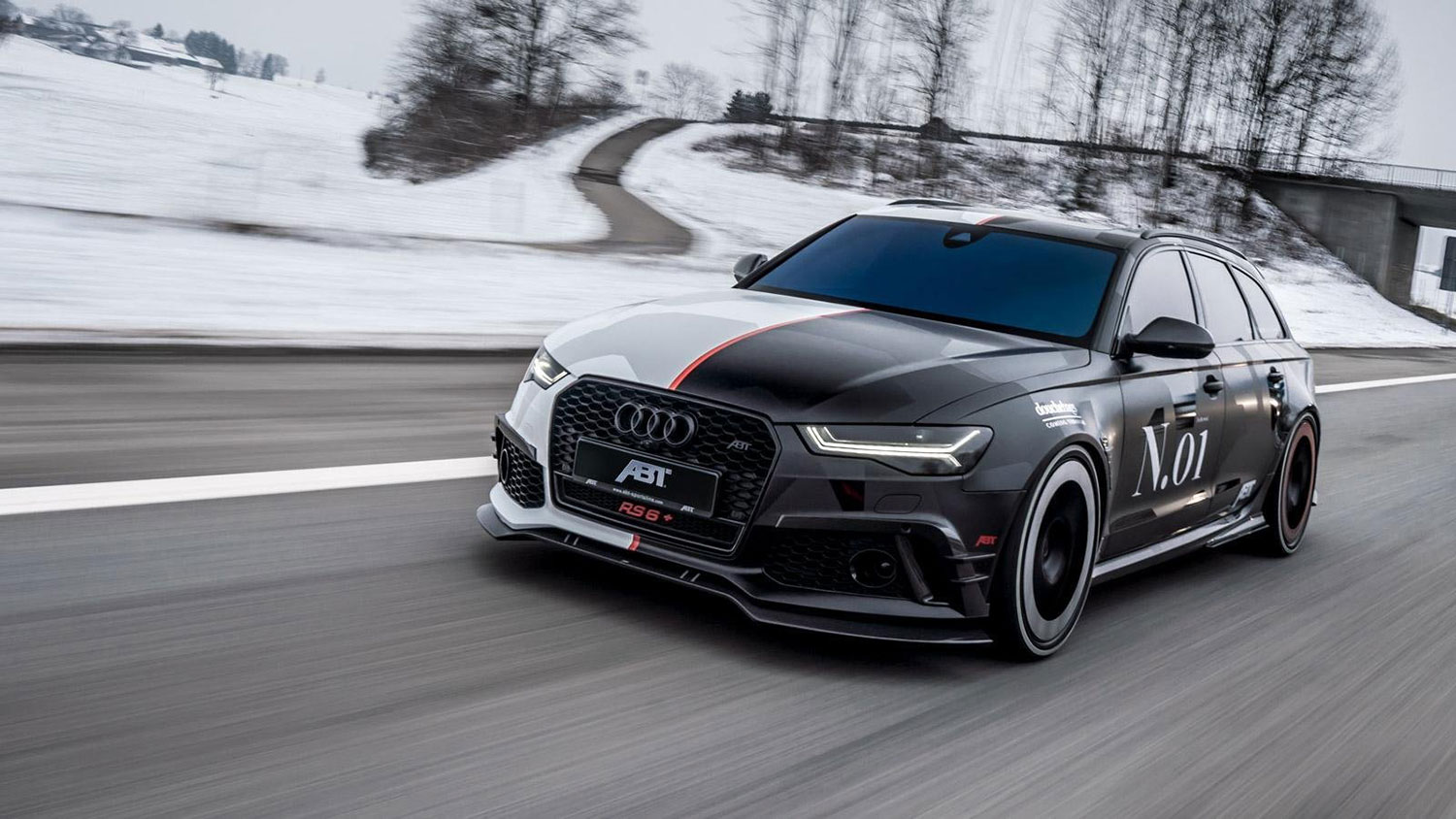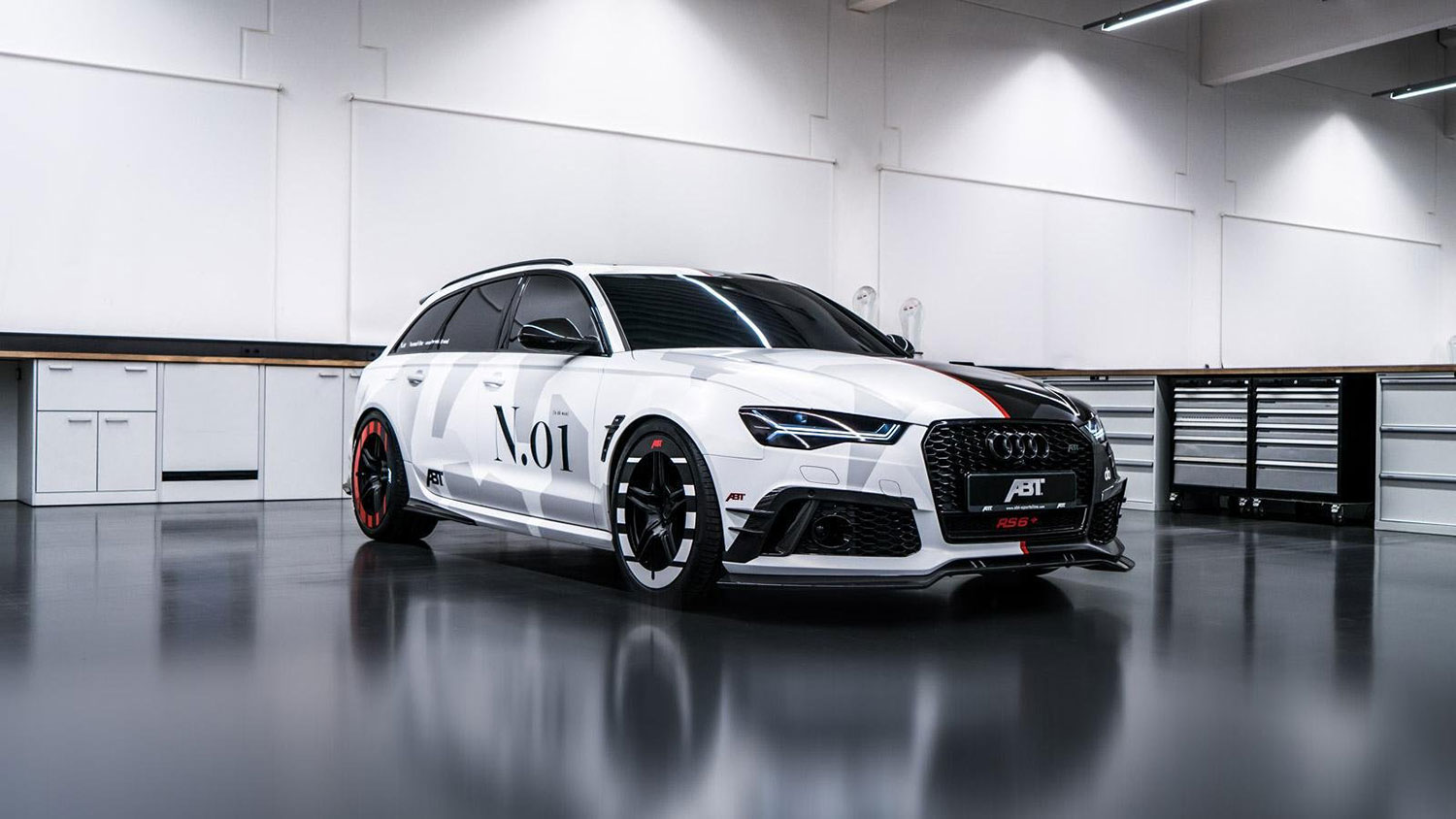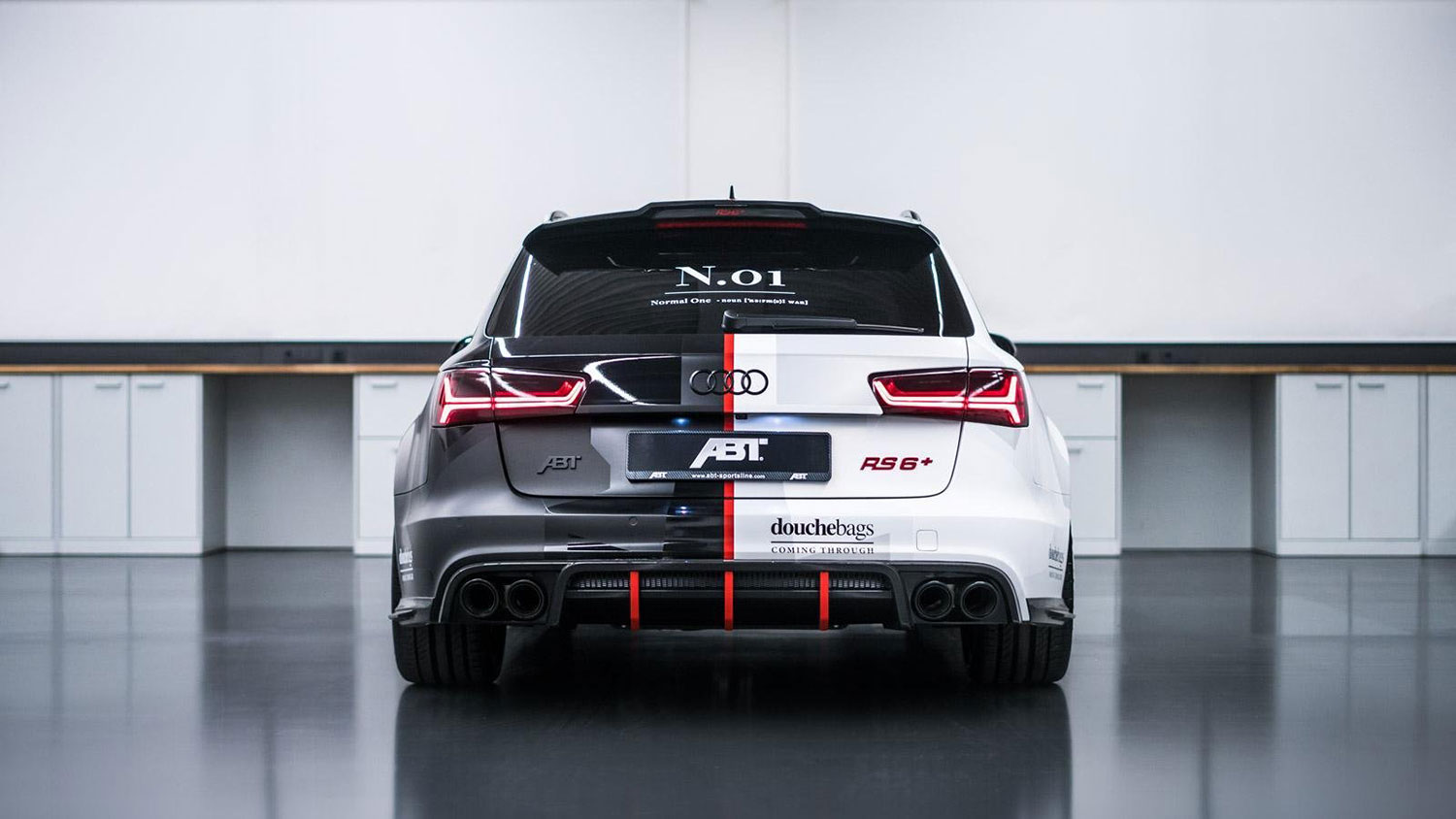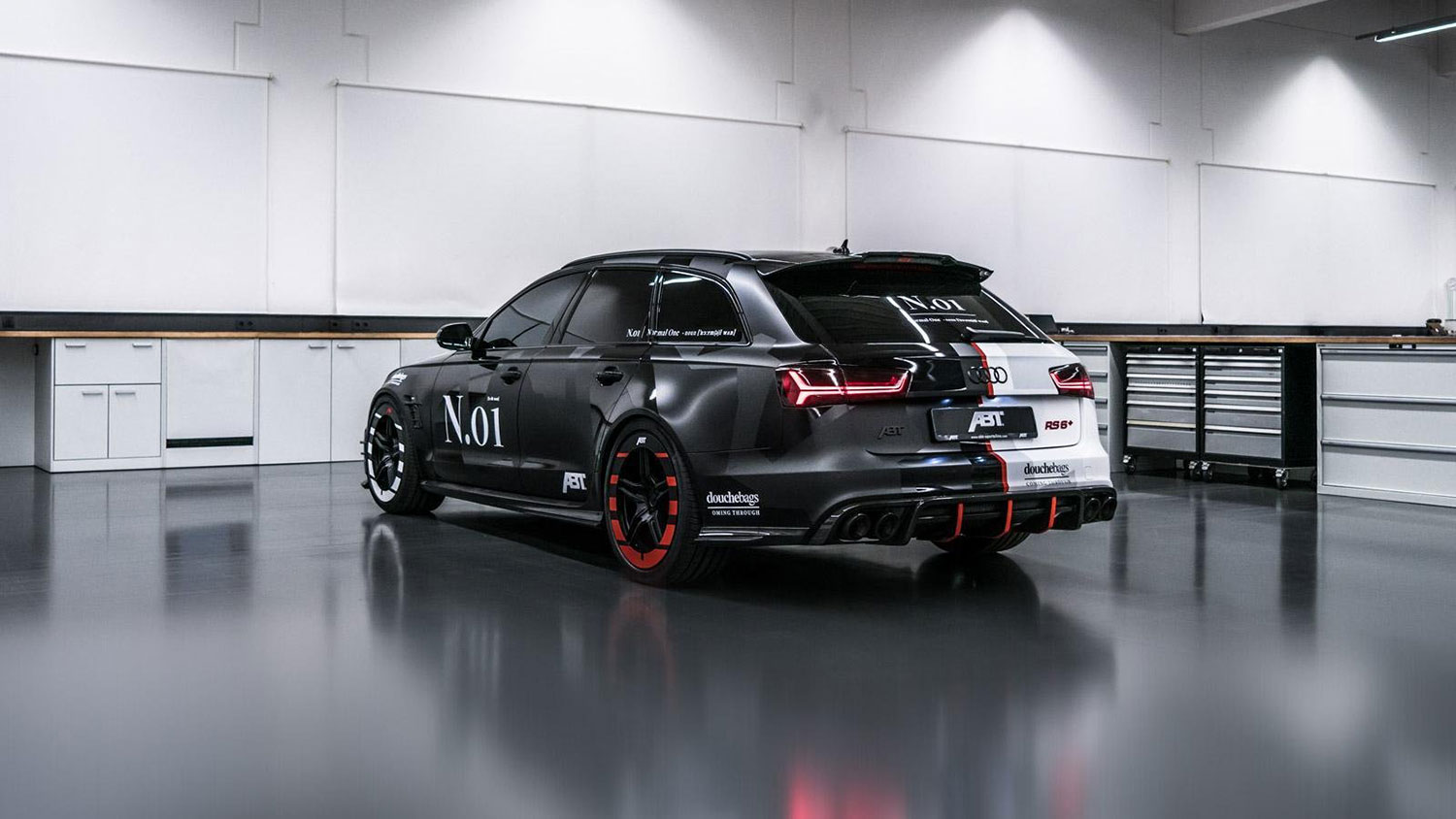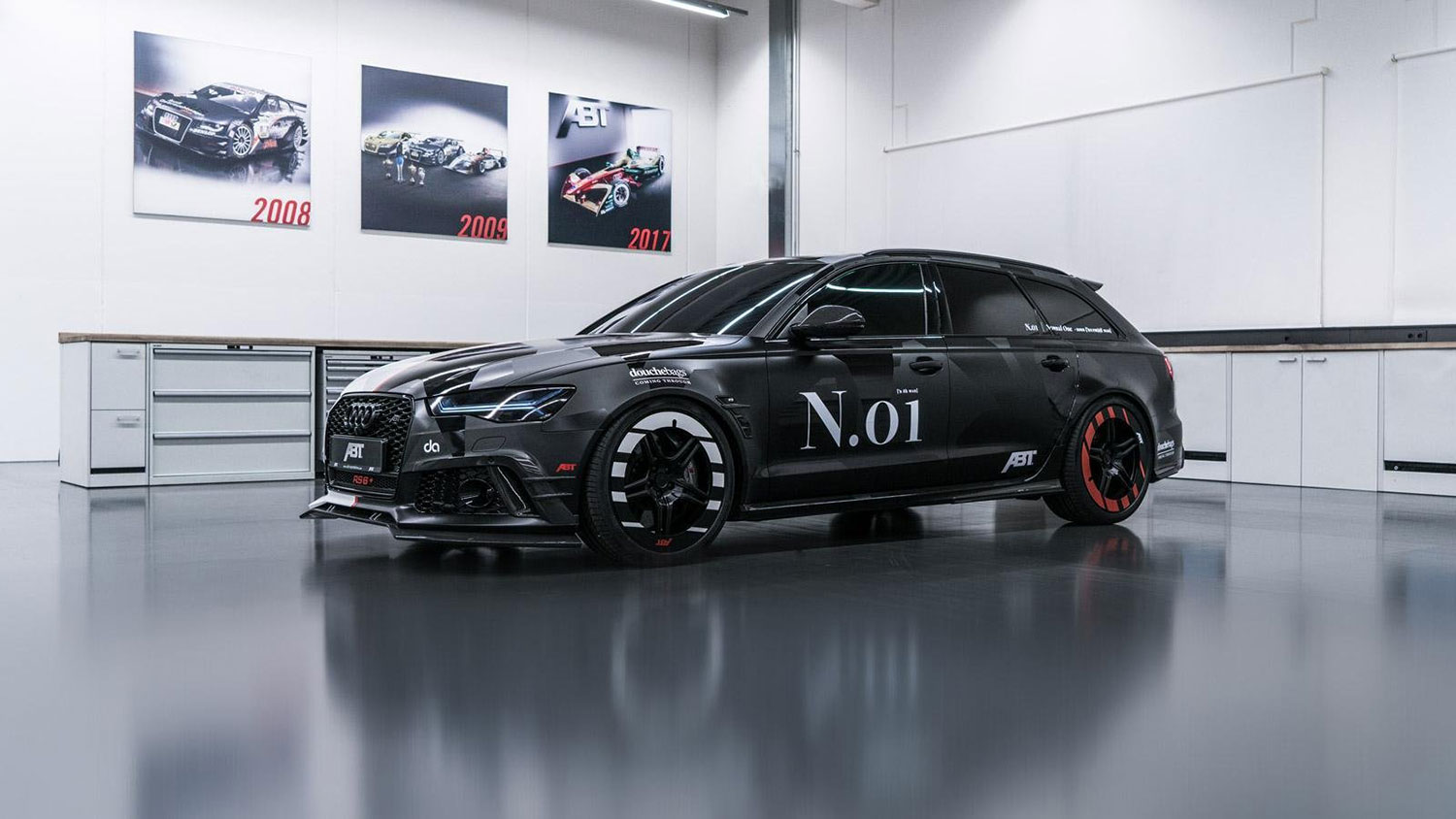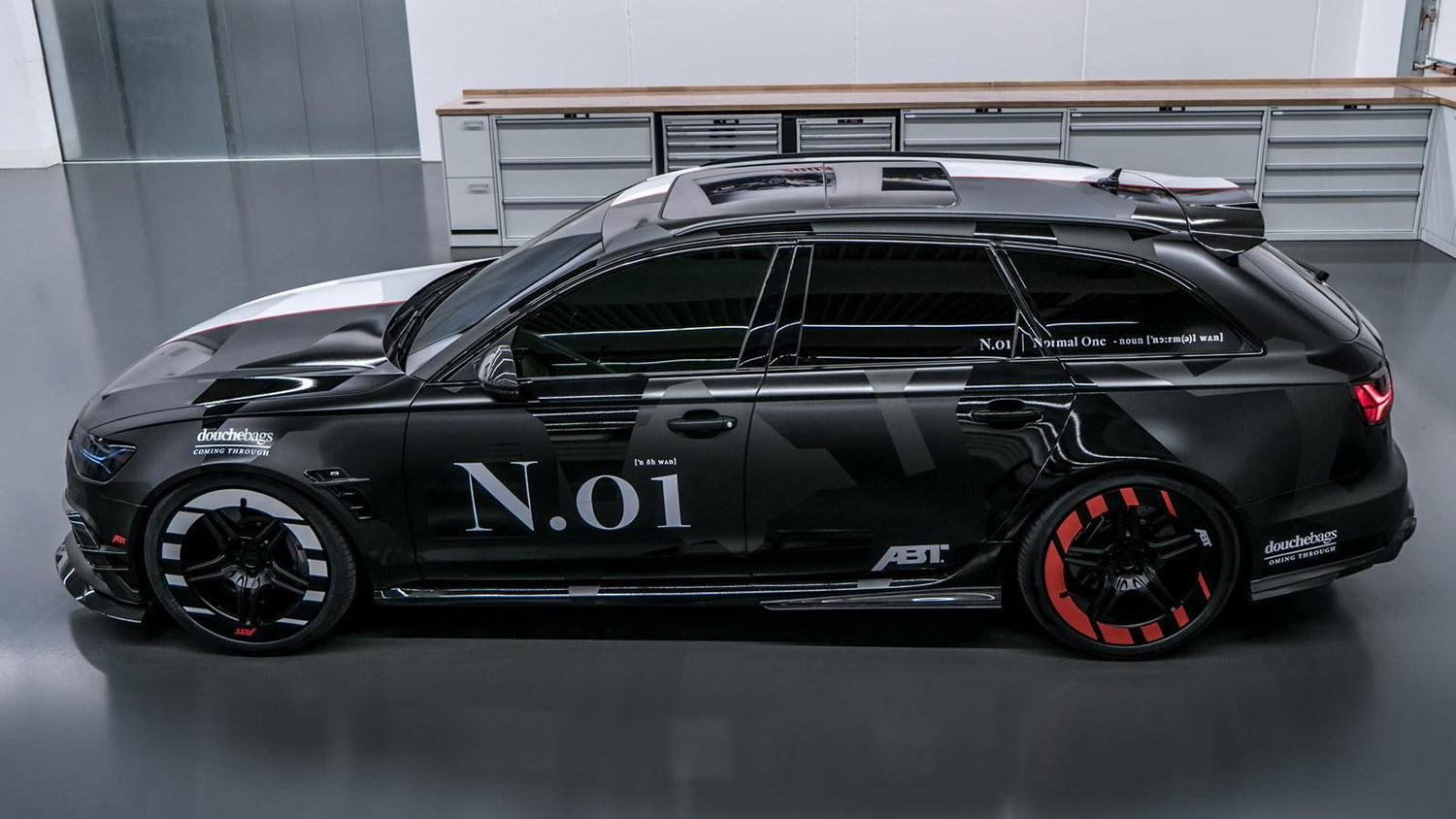The Audi RS6 Performance doesn’t need more power or a more aggressive design. With 597 horsepower and 516 pound-feet of torque produced from a twin-turbocharged V8, the wagon hits 60 mph in a supercar-rivaling 3.7 seconds. It’s no wonder Americans are upset Audi won’t sell the car here in the states.
Now we have a new reason to fume with jealousy. Professional skier Jon Olsson has commissioned ABT Sportline, Audi’s preferred tuning house, to build a hotter version of the already sizzling RS6 Performance. The result has been dubbed Project Phoenix. Outside, the special RS6 Performance is distinguished by half white, half black wrap separated by a red center stripe. Olsson’s other wrapped supercars typically sport camouflage designs, but the simpler styling of the Phoenix, with some gloss and some matte portions, is flawless.

Under the hood, the tuned monster now produces 725hp and 679 lb-ft of torque sent to all four wheels via a seven-speed dual-clutch transmission. That’s more power than a Hellcat, or a Lamborghini Huracan Performante, or a Ferrari 488 GTB. In Olsson’s vlog, we get to hear the hot wagon clear its throat (through a custom exhaust finished with carbon-fiber tips) and holy hand grenade … this thing sounds diabolical.
Other ABT-specific styling cues include a carbon fiber front lip spoiler, mirror caps, fender vents, front skirt, side sills, rear diffuser, and top-mounted spoiler. All windows and the headlights are tinted. All four wheels are gloss black, but the fronts feature white surrounds and the rear sport red accents. Often, I find tuner designs to reduce, not improve, the appeal of factory styling, but I have to agree with Olsson here: “I can’t find anything I don’t like about the design.”
Olsson is no stranger to fast Audi wagons; a few years back, he owned a camo-wrapped RS6 Avant that mimicked a DTM race car. After selling that vehicle, it was subsequently stolen and torched (tears were shed). Let’s just hope Olsson doesn’t turn fickle with his wagon appreciation and sell off the Phoenix. If he does, you can be sure we’ll find a way to buy (and import) this beast.
